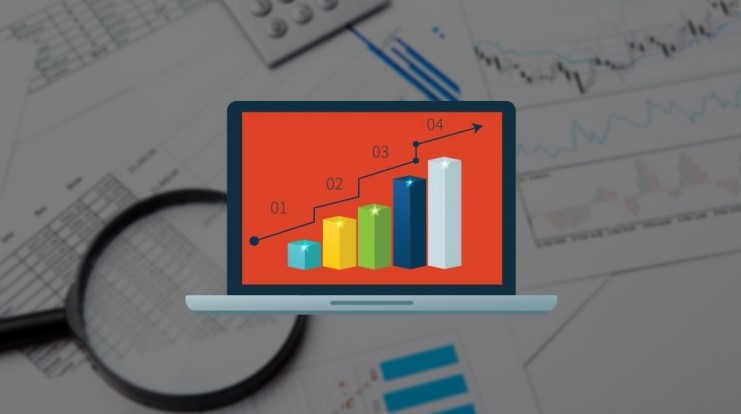We need to talk about 2023 (yes, already): Morning Brief
This article first appeared in the Morning Brief. Get the Morning Brief sent directly to your inbox every Monday to Friday by 6:30 a.m. ET. Subscribe
Tuesday, December 14, 2021
With taper, rate hikes baked into 2022, the chickens may come home to roost in 2023
Buy the taper, sell the fact?
Stocks, which mostly rallied as Federal Reserve officials dropped hints that crisis-era monetary accommodation is nearing an end, are clearly showing signs of wear.
With the Omicron variant of COVID-19 becoming less of a factor for asset markets, signs are emerging that the Fed’s deliberative moves to pull back on purchasing bonds — and then begin a rate hike campaign sometime next year — are starting to worry investors. Seemingly runaway inflation is making both consumers and policymakers alike nervous, and complicating the Fed’s task of engineering a soft landing for the economy.
On Wednesday, markets will get more clarity about the Fed’s plans to taper bond purchases, and where it sees rates going in 2022. But the Morning Brief is here to give our readers the unvarnished truth, straight no chaser — and as ever, there’s both good and bad news.
Barring unforeseen circumstances, i.e. the appearance of a new variant or a global conflagration, for example, investors can probably relax about what 2022 has in store.
Famous last words, perhaps, but we know the Fed is all but certain to tighten monetary policy and growth is likely to slow from current levels — but not to such an extent that’ll cause a downturn. Meanwhile, impossibly tight labor conditions will probably keep unemployment low and available jobs high, for most if not all of next year.
According to Sam Stovall, chief investment strategist at CFRA Research, gross domestic product in 2022 “should remain above average not only for the U.S., but also for the globe,” with headline inflation peaking in the first quarter before tumbling by over half by Q4, he wrote on Monday.
Currently, most Wall Street economists expect the Fed to mete out just one to two rate hikes next year, but they may be forced to get more aggressive if inflation stays at current levels. And the picture could easily get more complicated once the calendar flips to January 2023.
A hawkish Fed, bond yields gyrations and a strong dollar have the potential to sow chaos in markets and the economy in 2023. That combination is something strategists at Deutsche Bank referred to as “late-cycle dynamics” that could put downward pressure on prices, but leave a “behind the curve” Fed with “a lot of catching up to do” after a prolonged period of easy money.
In fact, Deutsche’s chief economist Jim Reid noted on Monday that “a common pattern seen across hiking cycles is that growth tends to slow in the year after the hikes have commenced but not the one it takes place in.” The bank’s data found 13 different rate hike cycles in which a recession arrived 3 to 3.5 years later, on average.
Accounting for the lag between growth and changes to monetary policy, “on average, real GDP growth in the first year of the hiking cycle was +4.8{1b90e59fe8a6c14b55fbbae1d9373c165823754d058ebf80beecafc6dee5063a}, but that slowed to +2.7{1b90e59fe8a6c14b55fbbae1d9373c165823754d058ebf80beecafc6dee5063a} in the second year, and +2.1{1b90e59fe8a6c14b55fbbae1d9373c165823754d058ebf80beecafc6dee5063a} in the third year,” Reid said.
“Given the earliest that it took for a recession to materialize after a rate hike is 11 months, then statistically it does appear that 2022 has a very low probability of negative growth,” the economist said. “However the probabilities will build from 2023 onwards if history is to be believed.”
That timetable is consistent with a Bank of America forecast. The bank expects 2022 growth to decelerate from the current year, but check in at a still robust 3.5{1b90e59fe8a6c14b55fbbae1d9373c165823754d058ebf80beecafc6dee5063a} annualized rate. Yet in 2023, the bank sees a markedly lower GDP print of 2.5{1b90e59fe8a6c14b55fbbae1d9373c165823754d058ebf80beecafc6dee5063a}, and an even less impressive 2.0{1b90e59fe8a6c14b55fbbae1d9373c165823754d058ebf80beecafc6dee5063a} in 2024, as the wages of the Fed’s rate hike campaign catch up with the economy.
Arguably worse news is that based on Fed “dot plot” projections, the central bank is still expected to hike rates in 2023 and 2024 — part of the catch up work it needs to do to tame prices — even as the economy slows.
By Javier E. David, editor at Yahoo Finance. Follow him at @Teflongeek
Yahoo Finance Highlights
5 giant stocks are driving the S&P 500 to records: Goldman Sachs
‘Misery Index’ at recession-like level despite high growth: Oxford Economics
Why Build Back Better is so unloved
—
Read the latest financial and business news from Yahoo Finance
Follow Yahoo Finance on Twitter, Instagram, YouTube, Facebook, Flipboard, and LinkedIn








